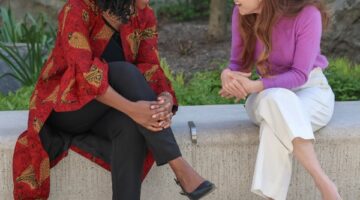In the world of medical robotics, Intuitive Surgical still rules supreme, but others are either challenging its hegemony or looking at expanding robotic applications overall.
In the latter group falls Neocis, a Miami startup that wants to bring its Yomi robotic system to bear upon the field of dental implant procedures.
In May, the company won the medical devices track of the MedCity INVEST Pitch Perfect competition in Chicago, that was judged by Renee Ryan, vice president, venture investments, Johnson & Johnson Innovation – JJDC, Erik Halvorsen, director, TMC Innovation Institute and the TMCx accelerator, and Michael Wasserman, managing director, H.I.G. BioHealth Partners. The Yomi robot won clearance from the Food and Drug Administration in March.
In a recent phone interview, the startup’s co-founder & CEO Alon Mozes said that Neocis’ robot-guided system is an improvement over the plastic guides that surgeons tend to use during minimally-invasive dental implant surgery.
“Oftentimes the surgeon will be drilling and they’ll see that the bone density it not what they had anticipated. And they wish they could adjust the implant position and angle by a millimeter or two,” Mozes explained. “If they made a plastic surgical guide, they’re stuck.”
At this point, the surgeon has two choices — stick with the guide or just go free hand, which has its own risks. Choosing the Yomi robot instead offers flexibility.

The Funding Model for Cancer Innovation is Broken — We Can Fix It
Closing cancer health equity gaps require medical breakthroughs made possible by new funding approaches.
“With our system, you can just go into the software and bump the plan over by a millimeter or two and now you have a completely new plan that the robot will guide you through,” he said.
The dental implant market is set for rapid expansion. Here’s a chart that shows that between 2013 and 2024, the market is projected to grow from a little over $3 billion in 2013 to 6.81 billion by 2024, according to Grand View Research.

Mozes contended that while most people have to go to a specialist to get the surgery done, general practice dentists are also hoping to get in the game.
“I think the dental implant market is certainly evolving so that what was once a primarily the domain of specialists is now becoming more and more the domain of general practice dentist,” he said. “There’s a strong need from the population for implants and it’s going to have to be handled by other dentists participating and performing the procedure.”
And the primary premise of all robotic procedures is repeatability and reproducibility regardless of skill, which should be appealing to such novice practitioners.
The system also provides haptic feedback — in other words, the surgeon knows by touch and feel through sensory feedback provided by the robot where in the mouth the drill is moving because bone will feel different than softer tissue, for instance.
“The way our system works is through the use of haptic robotic technology it physically limits the surgeon so that they are always going to stay on plan,” Mozes said. “That they will be able to plan everything ahead of time and the system will make sure that they execute the plan.”
The system costs $150,000 up front and Neocis charges a per implant fee that Mozes declined to disclose. The goal is to sell 10 by the end of the year and Mozes expects the company will sell out pretty soon.
Unlike other startups that may have to be dependent on reimbursement regimes to find success, Neocis needs to convince surgeons to see adoption. Dental implants remain an elective procedure not covered by insurance, and no other approved robotic device is on the market.
Mozes’ background in robotics may serve to win some confidence. He was a principal software engineer at Mako Surgical, which Stryker bought in 2013 for $1.65 million to do robot-assisted joint replacements.
But there are some skeptical surgeons out there who wonder if there truly is an unmet need. A North Carolina specialist put it like this on his practice’s website after a November 2015 Miami Herald article featuring Neocis was published:
With success rates well over 95% for dental implants, and dental implants lasting ten years, twenty years, or more, results are already good. And with most failures being related to patient factors like gum disease, smoking, or just failure to integrate, it’s unclear how a robot could help.
That was nearly two years ago and minds could change. But Mozes is aware and ready to face the challenge.
“You can’t just make a robotic surgery system and expect it to take off,” he said. “It has to be tailored for the particular procedures or market that you are trying to enter.”











